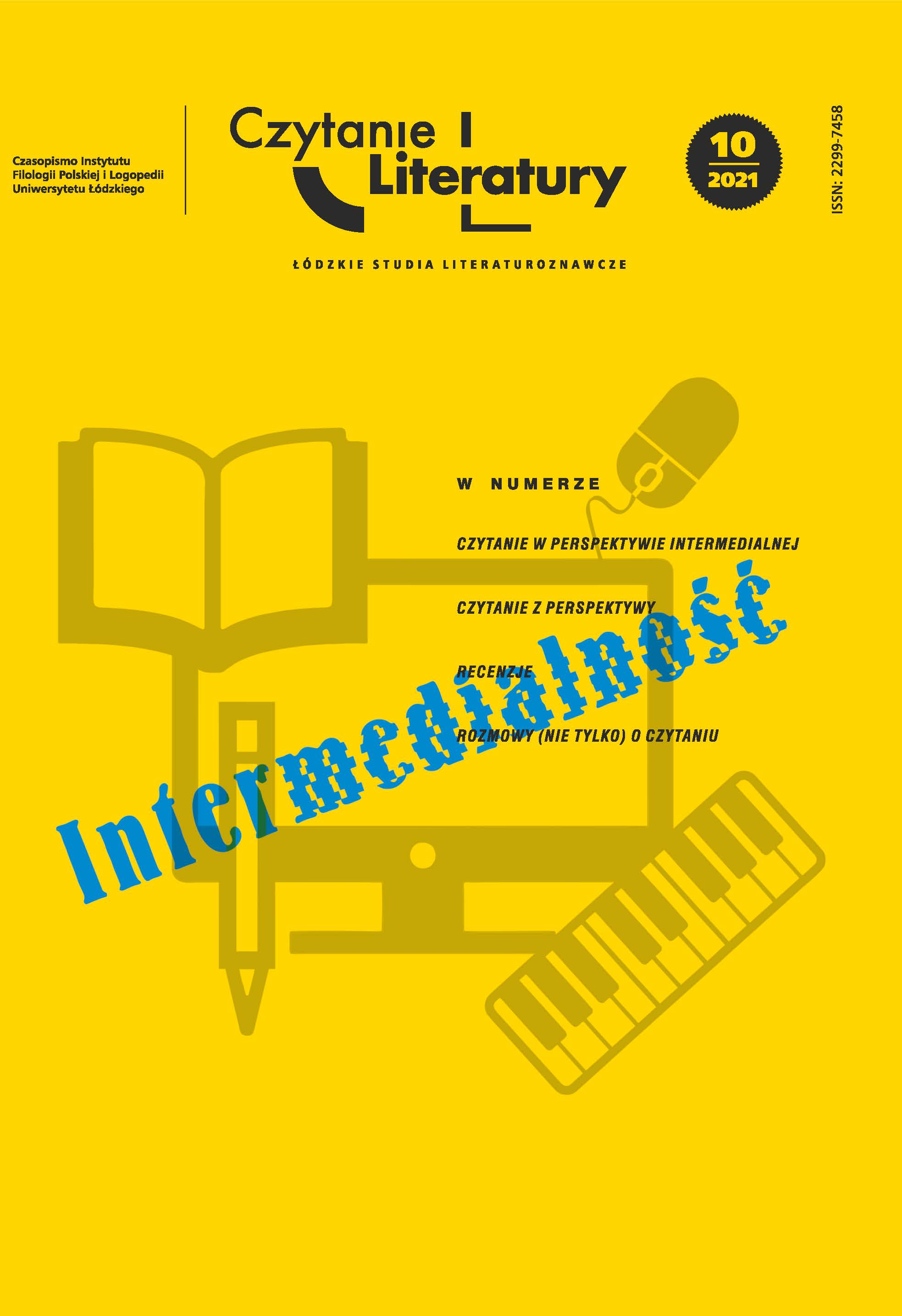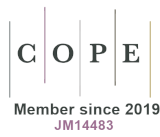Simone Weil and Kaija Saariaho. Literary and Musical Paradoxes
DOI:
https://doi.org/10.18778/2299-7458.10.04Keywords:
paradox, kenosis, Simone Weil, Kaija Saariaho, relations between literature and music, comparative studies, philosophyAbstract
The article attempts to compare how the poetics of paradox is realised in the philosophical and theological writings of Simone Weil and in the musical language of the Finnish composer Kaija Saariaho in her oratorio La Passion de Simone, dedicated to Weil’s biography and work. The etymology of paradox is a guide for the comparative analysis, from its meaning in opposition to doxa understood as a set of generally accepted beliefs to the reading of paradox as being ‛close to’ (para) ‛glory’ (doxa). Both semantic ranges permeate the fabric of Weil’s texts, both at the level of a language full of contradictions and at the level of the considered idea of kenosis, which is the greatest theological paradox, based on the clash between Christ’s divine nature and depriving him of glory at the time of his Crucifixion. Saariaho’s musical language exploits Weilian contradictions, juxtaposing contrasting masses of sound. It also transforms musical time into an impression of musical space and, paradoxically, imitates silence with sounds.
Downloads
References
Écrits de Londres et dernières lettres, Paris 1957. http://classiques.uqac.ca/classiques/weil_simone/Ecrits_de_Londres/ecrits_de_londres.pdf [dostęp 13.04.2021].
Google Scholar
Intuitions pré-chrétiennes, Paris 1951. http://classiques.uqac.ca/classiques/weil_simone/intuitions_pre_chretiennes/intuitions_pre_chretiennes.pdf [dostęp 13.04.2021].
Google Scholar
La connaissance surnaturelle, Paris 1950. http://classiques.uqac.ca/classiques/weil_simone/connaissance_surnaturelle/connaissance_surnaturelle.pdf [dostęp 13.04.2021].
Google Scholar
La pesanteur et la grâce, Paris 1947. http://classiques.uqac.ca/classiques/weil_simone/pesanteur_et_grace/pesanteur_et_grace.pdf [dostęp 13.04.2021].
Google Scholar
Leçons de philosophie, Paris 1959. http://classiques.uqac.ca/classiques/weil_simone/lecons_de_philosophie/lecons_de_philosophie.pdf [dostęp 13.04.2021]
Google Scholar
Lettre à un religieux, Paris 1951. http://classiques.uqac.ca/classiques/weil_simone/lettre_a_un_religieux/lettre_a_un_religieux.pdf [dostęp 13.04.2021].
Google Scholar
Maalouf A., La Passion de Simone. Chemin musical en quinze stations. Livret par Amin Maalouf, [w książeczce do płyty:] K. Saariaho, D. Upshaw, Finnish Radio Symphony Orchestra, Tapiola Chamber Choir, Esa Pekka-Salonen, La Passion de Simone, ODE 1217–5, Helsinki: Ondine Oy 2013.
Google Scholar
Œuvres, red. F. de Lussy, Paris 1999 (przedruk: 2011).
Google Scholar
Œuvres complètes, t. VI, Cahiers, vol. 1, red. A. Devaux, F. de Lussy, Paris 1994.
Google Scholar
Œuvres complètes, t. VI, Cahiers, vol. 2, red. A. Devaux, F. de Lussy, Paris 1997.
Google Scholar
Œuvres complètes, t. VI, Cahiers, vol. 3, red. A. Devaux, F. de Lussy, Paris 2002.
Google Scholar
Œuvres complètes, t. VI, Cahiers, vol. 4, red. A. Devaux, F. de Lussy, Paris 2006.
Google Scholar
Poèmes suivis de Venise sauvée; Lettre de Paul Valéry, Paris 1968.
Google Scholar
Czy walczymy o sprawiedliwość?, [w:] S. Weil, Wybór pism, t. II, Warszawa 1983, s. 405–418.
Google Scholar
Dzieła, tłum. M. Frankiewicz, Poznań 2004.
Google Scholar
Myśli, tłum. A. Olędzka-Frybesowa, Warszawa 1985.
Google Scholar
Szaleństwo miłości i ostatnie listy, tłum. M. i J. Plecińscy, Poznań 2016.
Google Scholar
Świadomość nadprzyrodzona. Wybór myśli, tłum. A. Olędzka-Frybesowa, oprac. A. Wielowieyski, Warszawa 1999.
Google Scholar
Wybór pism, tłum. i oprac. C. Miłosz, Kraków 1991.
Google Scholar
Baziak J., Pasje i niepokoje Simone Weil, Bydgoszcz 2001.
Google Scholar
Bingemer M.C., Simone Weil: Mystic of Passion and Compassion, transl. K.M. Kraft, foreword T. Estelrich, Eugene 2015. https://doi.org/10.2307/j.ctt19705b5
Google Scholar
DOI: https://doi.org/10.2307/j.ctt19705b5
Blum L.A., Seidler V.J., A Truer Liberty: Simone Weil and Marxism, New York–London 2010.
Google Scholar
Browning Helsel Ph., Simone Weil’s Passion Mysticism: The Paradox of Chronic Pain and the Transformation of the Cross, „Pastoral Psychol.” 2009, vol. 58, no. 1, s. 55–63. https://doi.org/10.1007/s11089-008-0161-y
Google Scholar
DOI: https://doi.org/10.1007/s11089-008-0161-y
Brueck K.T., The Mysticism of Simone Weil and François Mauriac’s Viper’s Tangle: Affliction, Gravity, and Grâce, „Mystics Quarterly” 1989, vol. 15, no. 4, s. 166–176. https://www.jstor.org/stable/20716952 [dostęp 9.02.2021].
Google Scholar
Di Nicola J.P., Mystique et laïcité, [w:] Simone Weil. Action et Contemplation, coordination E. Gabellieri, M.-C. Lucchetti Bingemer, Paris 2008, s. 143–158.
Google Scholar
Evans J., RSM, Kourie Celia E.T., Toward Understanding Mystical Consciousness: An Analysis of a Text from Simone Weil, „Religion & Theology” 2003, vol. 10, no. 2, s. 149–165. https://doi.org/10.1163/157430103X00024
Google Scholar
DOI: https://doi.org/10.1163/157430103X00024
Gutbrod G., La notion du silence dans la poétique de Simone Weil, „Revue d’Études Françaises” 2009, vol. 14, s. 189–196.
Google Scholar
Gutbrod G., La technique poétique dans la pensée weilienne, „Le Cahiers d’Histoire de la Philosophie”, collection dirigée par M. Caron, sous la direction de Ch. Delsol, préface par E. Gabellieri, Paris 2009, s. 543–555.
Google Scholar
Kinsey J., Mathematics and the Mystical in the Thought of Simone Weil, „Philosophical Investigations” 2020, vol. 43, no. 1–2, s. 77–100. https://doi.org/10.1111/phin.12261
Google Scholar
DOI: https://doi.org/10.1111/phin.12261
Little J.P., Simone Weil and the Limits of Language, [w:] The Beauty that Saves: Essays on Aesthetics and Language in Simone Weil, ed. by J.M. Dunaway, E.O. Springsted, Macon, GA 1996, s. 39–54.
Google Scholar
Little J.P., Simone Weil’s Concept of Decreation, [w:] Simone Weil’s Philosophy of Culture: Readings Toward a Divine Humanity, ed. and introduced by R.H. Bell, Cambridge 1993, s. 25–51.
Google Scholar
Nevin T.R., Simone Weil: Portrait of a Self-Exiled Jew, Chapel Hill 1991.
Google Scholar
Pekonen O., La sainte face de Simone nous examine, „Tempus Perfectum” 2013, no. 11 („Kaija Saariaho: l’ombre du songe”, sous la direction de C. Mao-Takacs), s. 41–42.
Google Scholar
Petitdemange G., Logos, cri, silence: Notes sur le Cahier 18 de Simone Weil, „Archive de Philosophie” 2009, vol. 72, no. 4: „Simone Weil et la philosophie dans son histoire”, s. 645–659. https://doi.org/10.3917/aphi.724.0645
Google Scholar
DOI: https://doi.org/10.3917/aphi.724.0645
Pétrement S., Simone Weil: A Life, tansl. R. Rosenthal, New York 1988.
Google Scholar
Pinnock S.K., Mystical Selfhood and Women’s Agency: Simone Weil and French Feminist Philosophy, [w:] The Relevance of the Radical: Simone Weil 100 Years Later, ed. by A.R. Rozelle-Stone, L. Stone, New York 2010, s. 205–220.
Google Scholar
Rabedon C., Sigaux J.-L., Simone Weil. Mystique et rebelle, Paris 2008.
Google Scholar
Rozelle-Stone A.R., Stone L., Atheism and Mysticism, [w:] A.R. Rozelle-Stone, L. Stone, Simone Weil and Theology, London–New York 2013, s. 9–34.
Google Scholar
DOI: https://doi.org/10.5040/9781472551337.ch-001
Rozelle-Stone A.R., Stone L., Simone Weil and Theology, London–New York 2013.
Google Scholar
DOI: https://doi.org/10.5040/9781472551337
Schumann M., L’experience religieuse de Simone Weil, „Sud” 1990, nr 87/88: „Simone Weil, la soif de l’absolu”, s. 29–35.
Google Scholar
Springsted E.O., Contradiction, Mystery, and The Use of Words in Simone Weil, [w:] The Beauty that Saves: Essays on Aesthetics and Language in Simone Weil, ed. by J.M. Dunaway, E.O. Springsted, Macon, GA 1996, s. 13–29.
Google Scholar
Tomczak P., Les métaphores de l’être. Vers la poétique de la décreation, [w:] Simone Weil et le poétique, sous la direction de J. Thélot, J.-M. Le Lannou, E. Sepsi, Paris 2007, s. 59–72.
Google Scholar
Vető M., Mystique et décréation, [w:] Simone Weil. Philosophie, mystique, esthétique, sous la direction de G. Gutbrod, J. Janiaud, E. Sepsi, Paris 2012, s. 143–155.
Google Scholar
Yourgrau P., Simone Weil, London 2011.
Google Scholar
Maalouf A., La Passion de Simone. Chemin musical en quinze stations. Livret par Amin Maalouf, [w książeczce do płyty:] K. Saariaho, D. Upshaw, Finnish Radio Symphony Orchestra, Tapiola Chamber Choir, Esa Pekka-Salonen, La Passion de Simone, ODE 1217–5, Helsinki: Ondine Oy 2013, s. 23–34.
Google Scholar
Saariaho K., La Passion de Simone for soprano solo, chorus, orchestra. Libretto by Amin Maalouf, London 2008.
Google Scholar
Barrière A., Théâtre musical, théâtre de la musique. La rencontre de Kaija Saariaho et Peter Sellars, „Tempus Perfectum” 2013, no. 11, s. 25–31.
Google Scholar
„Gdy komponuję, nie myślę o sobie, liczy się tylko muzyka”. Z Kaiją Saariaho rozmawia Agnieszka Draus, „Teoria Muzyki” 2017, nr 11, s. 121–127.
Google Scholar
Kucia K., Figura kenozy w literaturze i muzyce. Przypadek oratorium La Passion de Simone Kaiji Saariaho, „Rocznik Komparatystyczny” 2017, nr 8, s. 231–261. https://doi.org/10.18276/rk.2017.8-11
Google Scholar
DOI: https://doi.org/10.18276/rk.2017.8-11
Mao-Takacs C., Saariaho K., L’aile de l’ombre, conversation avec Kaija Saariaho, „Tempus Perfectum” 2013, nr 11, s. 7–14.
Google Scholar
Moisala P., Kaija Saariaho, Chicago 2009.
Google Scholar
Roth S., [książeczka do płyty, w:] K. Saariaho, K. Mattila, A. Karttunen, C. Eschenbach, Notes on Light, Orion, Mirage, Helsinki: Ondine Inc. 2008, s. 9–11.
Google Scholar
Saariaho K., Le passage des frontières. Écrits sur la musique, transl. S. Roth, Paris 2013.
Google Scholar
Adorno T.W., Filozofia nowej muzyki, tłum. F. Wayda, Warszawa 1974.
Google Scholar
Didi-Huberman G., Przed obrazem. Pytanie o cele historii sztuki, tłum. B. Brzezicka, Gdańsk 2011.
Google Scholar
Eliot T.S., Collected Poems 1902–1962, New York 1970.
Google Scholar
Eliot T.S., Jałowa ziemia, tłum. Cz. Miłosz, Kraków 1989.
Google Scholar
Forajter W., Paradoks [hasło], [w:] Ilustrowany słownik terminów literackich. Historia, anegdota, etymologia, red. Z. Kadłubek, B. Mytych-Forajter, A. Nawarecki, Gdańsk 2019, s. 363–367.
Google Scholar
Frye N., Wielki Kod. Biblia i literatura, tłum. A. Fulińska, Bydgoszcz 1998.
Google Scholar
Momro J., Ucho nie ma powieki. Dźwiękowe sceny pierwotne, Kraków 2020.
Google Scholar
O’Connor F., The Habit of Being, New York 1979.
Google Scholar
Pismo Święte Starego i Nowego Testamentu w przekładzie z języków oryginalnych. Biblia Tysiąclecia, Poznań 2003, https://biblia.deon.pl [dostęp 13.04.2021].
Google Scholar
Platon, Państwo, tłum., wstępem i komentarzami opatrzył W. Witwicki, Kęty 2003.
Google Scholar
Urs von Balthasar H., Chwała. Estetyka teologiczna, t. III/II: Teologia, cz. 2: Nowy Testament, tłum. J. Fenrychowa, Kraków 2010.
Google Scholar
Downloads
Published
How to Cite
Issue
Section
License

This work is licensed under a Creative Commons Attribution-NonCommercial-NoDerivatives 4.0 International License.










